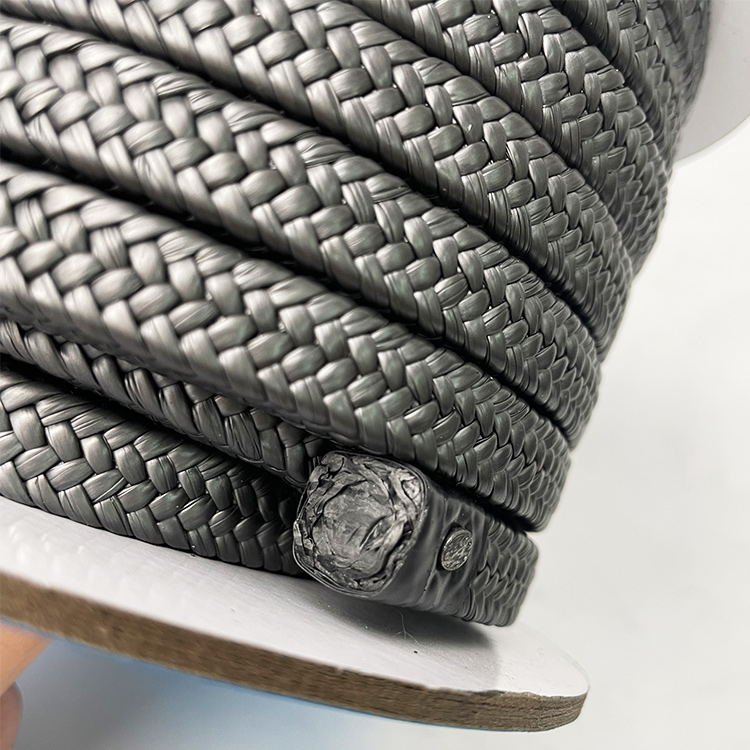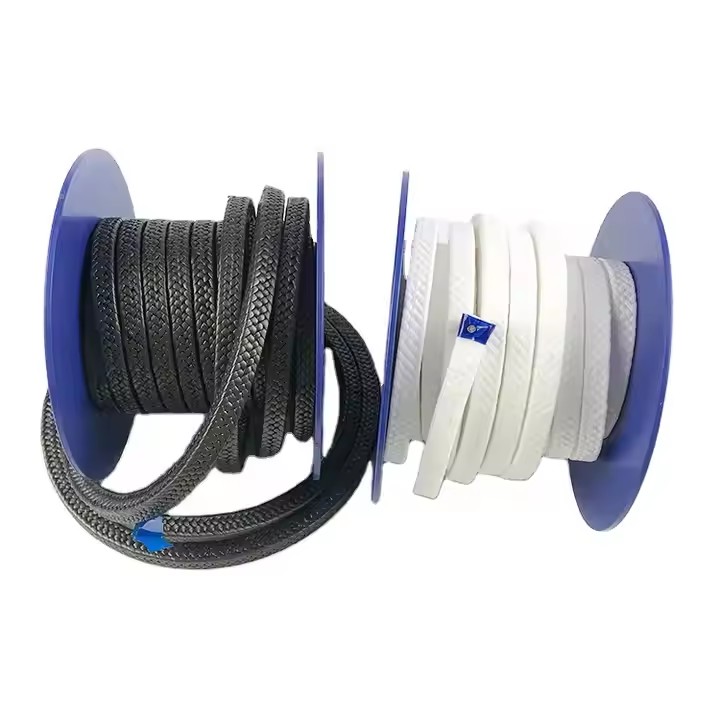PTFE packing is a strong sealing material. Many industries use it. PTFE packing with oil and without oil differs greatly. They have distinct chemical compositions, performance traits, and uses.
Chemical Composition:

PTFE packing without oil
a. The manufacturer creates PTFE packing without oil from woven PTFE fibers. It has no oily substances or additives.
b. Processing method: A special weaving process weaves PTFE fibers into a flexible, adjustable sealing material.
2. PTFE packing with oil
a. Main component: PTFE packing with oil uses PTFE fibers. It has the right amount of lubricating oil, such as silicone oil or other lubricants.
b. Processing method: We apply lubricating oil to PTFE fibers during or after weaving. This improves lubrication and sealing.
Performance Characteristics:
1. PTFE packing without oil
a. Chemical stability: It shows great chemical stability. It resists corrosion from strong acids, strong bases, and organic solvents, reports say.
b. **Thermal stability:** It stays stable at high temperatures. Usually, it works well between -196°C and 260°C. This range may change based on the product and process.
c. Electrical insulation: It provides great electrical insulation and is ideal for applications requiring electrical isolation.
d. Self-lubrication: It lacks oil but still provides some self-lubrication. This helps reduce friction and wear on sealing surfaces.
e. Wear resistance: PTFE fibers have great properties, so PTFE packing without oil is also wear-resistant.
f. Cleanliness: It does not produce oil stains during use, which is beneficial for maintaining a clean environment.
2. PTFE packing with oil
a. Lubrication: Adding lubricating oil or lubricants improves PTFE packing. This enhances lubrication, lowers the friction between sealing surfaces, and reduces wear and energy use.
b. Sealing performance: Better lubrication leads to higher sealing performance. This makes it ideal for applications with strict sealing needs.
c. Corrosion resistance: Even with added lubricating oil, PTFE packing still offers great corrosion resistance.
d. Applicability: PTFE packing with oil works better in tough settings. It seals well in high temperatures, high pressures, and strong corrosive conditions.
Application Scenarios:
1. PTFE packing without oil
a. Food industry: PTFE packing is oil-free, clean, and odorless. It meets food hygiene standards, so it is popular for sealing food-processing equipment.
b. Pharmaceutical industry: Its clean and odorless quality is ideal for sealing equipment in this field. Plus, it meets hygiene standards.
c. Chemical industry: For chemical equipment dealing with corrosive media and requiring high cleanliness, PTFE packing without oil is the best choice.
d. Other industries: Equipment in papermaking and chemical fibers often uses PTFE packing for sealing, and it doesn’t need oil.
2. PTFE packing with oil
a. High-temperature and high-pressure uses: PTFE packing with oil is great for sealing in tough conditions. It performs well in high temperatures, high pressures, and corrosive environments.
b. Heavy-duty machinery: This is often used in heavy-duty machines and equipment that need strong sealing and wear resistance.
c. Petrochemical Industry: PTFE packing with oil is usually the top choice for the petrochemical industry. It meets the high sealing and lubrication needs effectively.
d. Other industries use it in harsh conditions, like power generation and metallurgy.
1. Industries often use PTFE packing with oil in high-temperature and high-pressure situations. It offers great lubrication and sealing properties.
2. Corrosive environments: In the chemical industry, equipment like reactors and agitators often use PTFE packing with oil. This helps to seal them in tough conditions.

PTFE packing with oil
3. Dynamic sealing: PTFE packing works well with oil, making it great for dynamic sealing. It’s ideal for applications that need frequent start-stop operations.
Price difference
Generally speaking, PTFE packing with oil may have a slightly higher production cost and price due to the addition of lubricants.
Precautions
1. Choosing the right packing: Pick packing material based on the work environment and needs. Choose PTFE packing without oil to keep the environment clean. In high-temperature, high-pressure, or corrosive settings, use PTFE packing with oil.
2.Installation and Maintenance: When installing PTFE packing, follow these steps:
Check that the sealing surface is flat.
Keep the surface clean.
These steps ensure stable operation.
Additionally, users should carry out regular inspections and maintenance during use. If the sealing effect deteriorates or leakage occurs, you should replace it promptly.
3. Store PTFE packing in a dry and well-ventilated area. Store it away from light and harmful substances. This includes organic solvents, acids, and alkalis.
 Hongwo Braided Packing
Hongwo Braided Packing


WhatsApp
Scan the QR Code to start a WhatsApp chat with us.